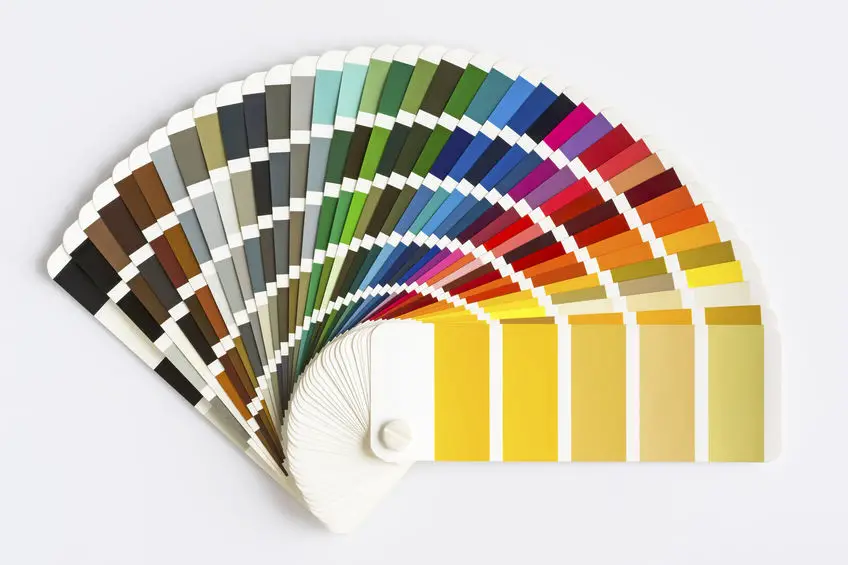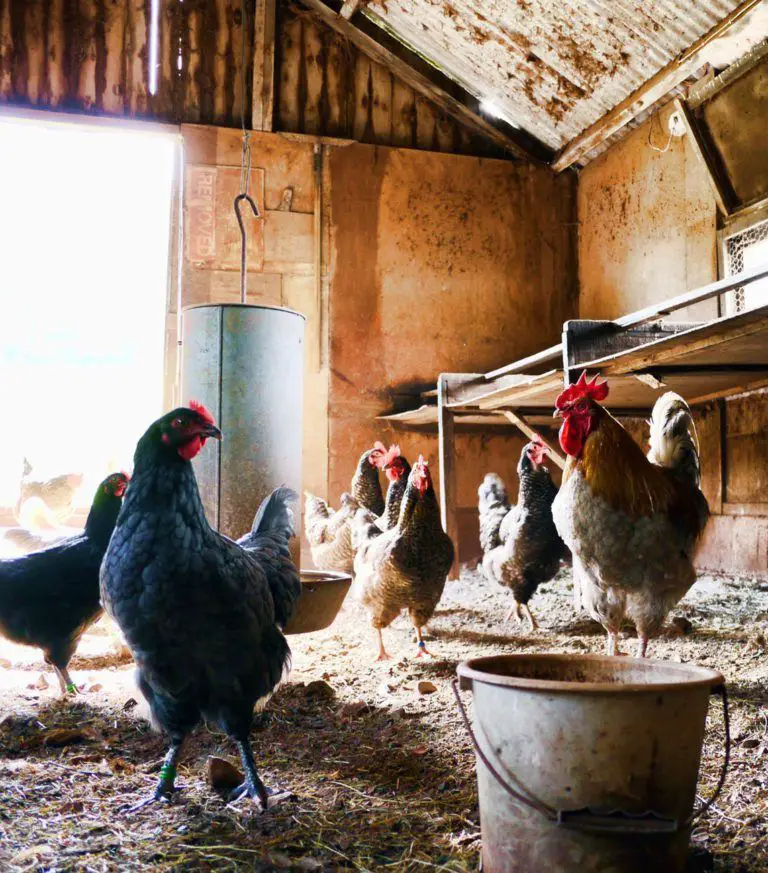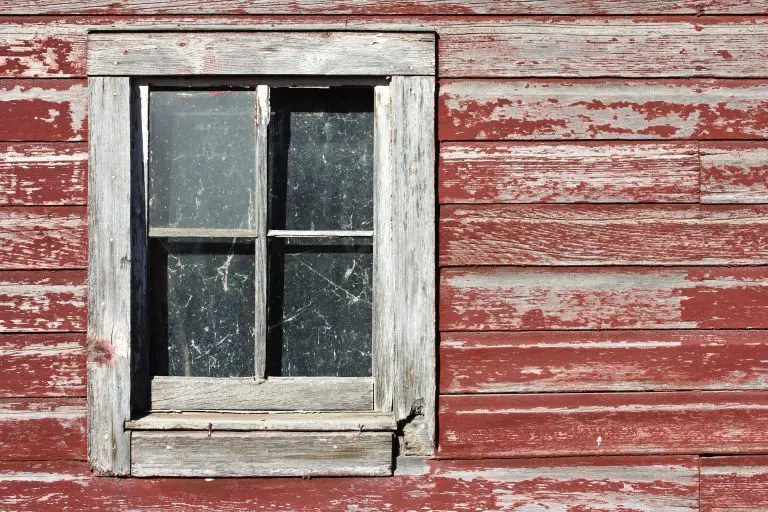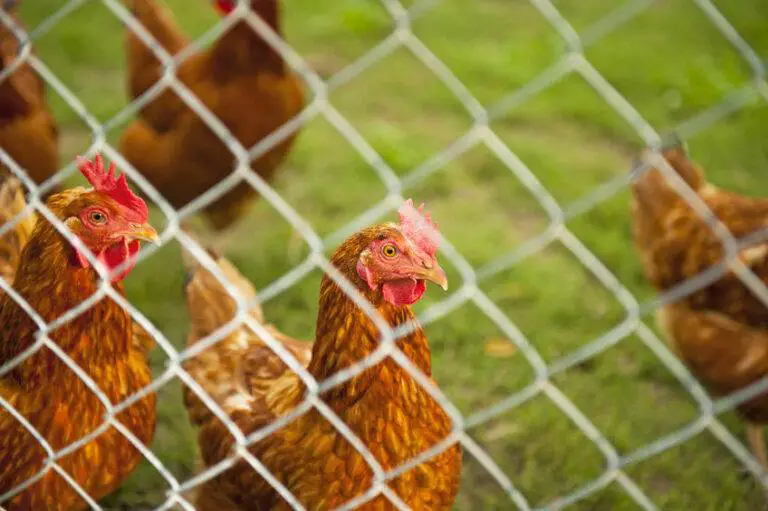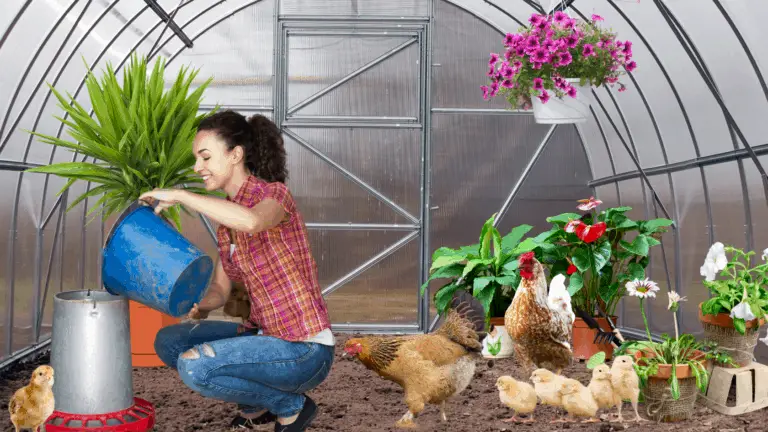Chicken Coop Colors – Which Paints Are Best For Your Flock?
Selecting The Perfect Paint Color For Your Chicken Coop
Do you have a chicken coop that’s screaming for a makeover or a pop of color? Whether you want to “spiff” up your coop or create a conversation starter for your backyard, we’ve got you covered.
Choosing chicken coop colors can be as stressful as picking out exterior colors for your home. Just remember, this is a fun project and one that is a whole lot smaller!
Let’s check out a few safe paints to use, along with some serious eyebrow-raising stuff about the meanings behind colors. Oh, and we almost forgot, we’re going to find out if chickens can see colors!
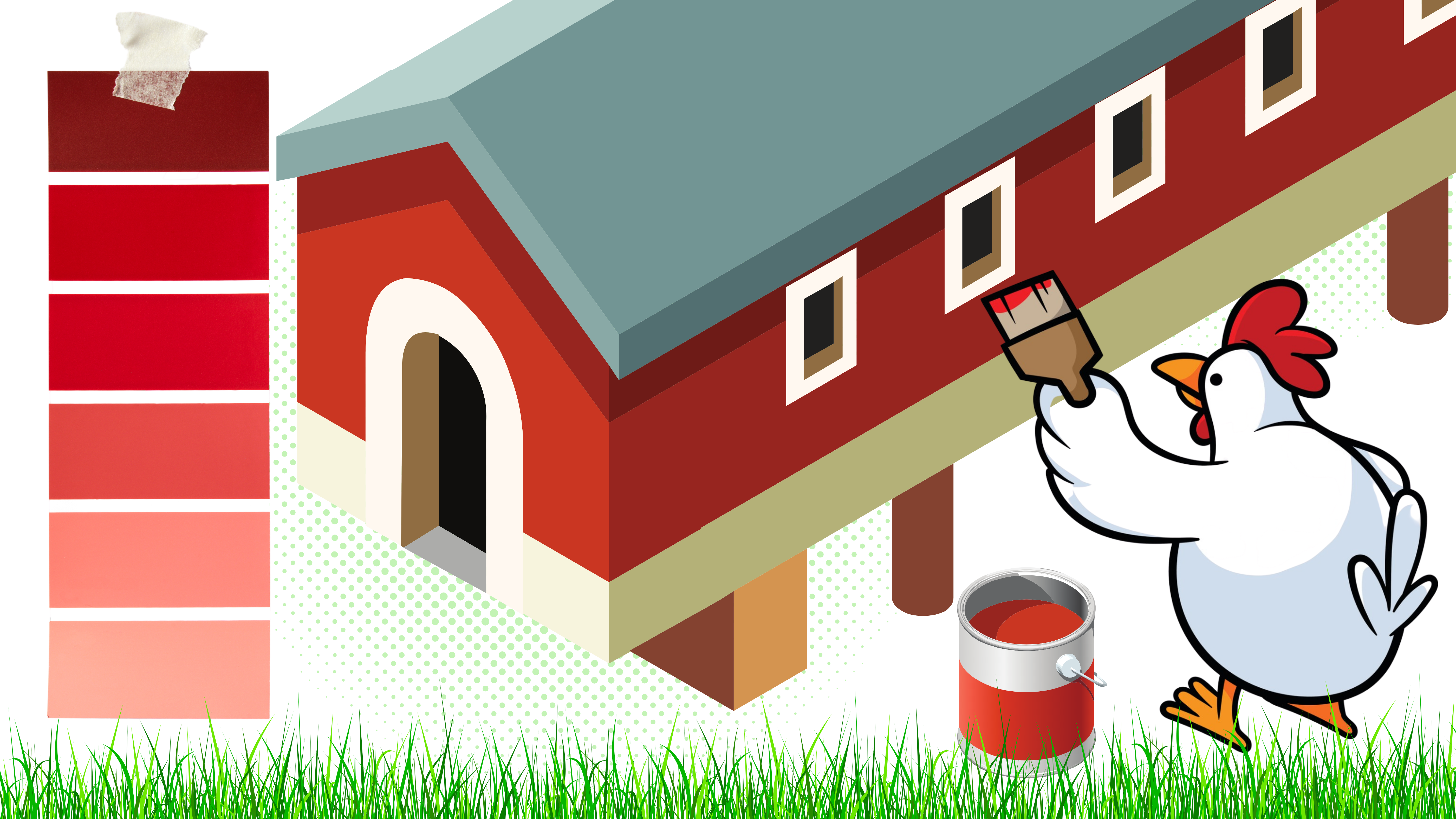
Safe Paint & Chickens
If you have a stash of old paint stored that you’re considering possibly using to paint your coop, WAIT!!!
Pets (including chickens) are highly sensitive to potentially toxic ingredients in some paints. Before you use any paint or stain on surfaces that chickens come into contact with, read the label. Paints may contain volatile compounds that off-gas (emit toxic odor.)
“Does it matter what kind of paint I use if it’s the exterior of my coop?” – Yes, it matters because the odor penetrates the wood.
If you’re wondering what accessories are needed for your coop, read this article.
Paint and Potential Harmful Ingredients
Most of us give little thought about reading the ingredient label of paint before purchasing it. Most paints, as we know it, don’t smell all that great. Those odors can cause harm to our chickens if we aren’t careful.
Older paint that you have had stored for decades should NEVER be used because of lead. Lead can be fatal to your chickens if you use that paint on their coop.
Volatile Organic Compounds in Paint
Paint typically contains two different volatile organic compounds, which are benzene and formaldehyde.
The “Ugly” Side of Volatile Organic Compounds
- Benzene: causes cancer, leukemia, and chromosome damage.
- Formaldehyde: causes cancer, inhibits the immune system, and causes breathing problems.
- Contributor in harmful smog
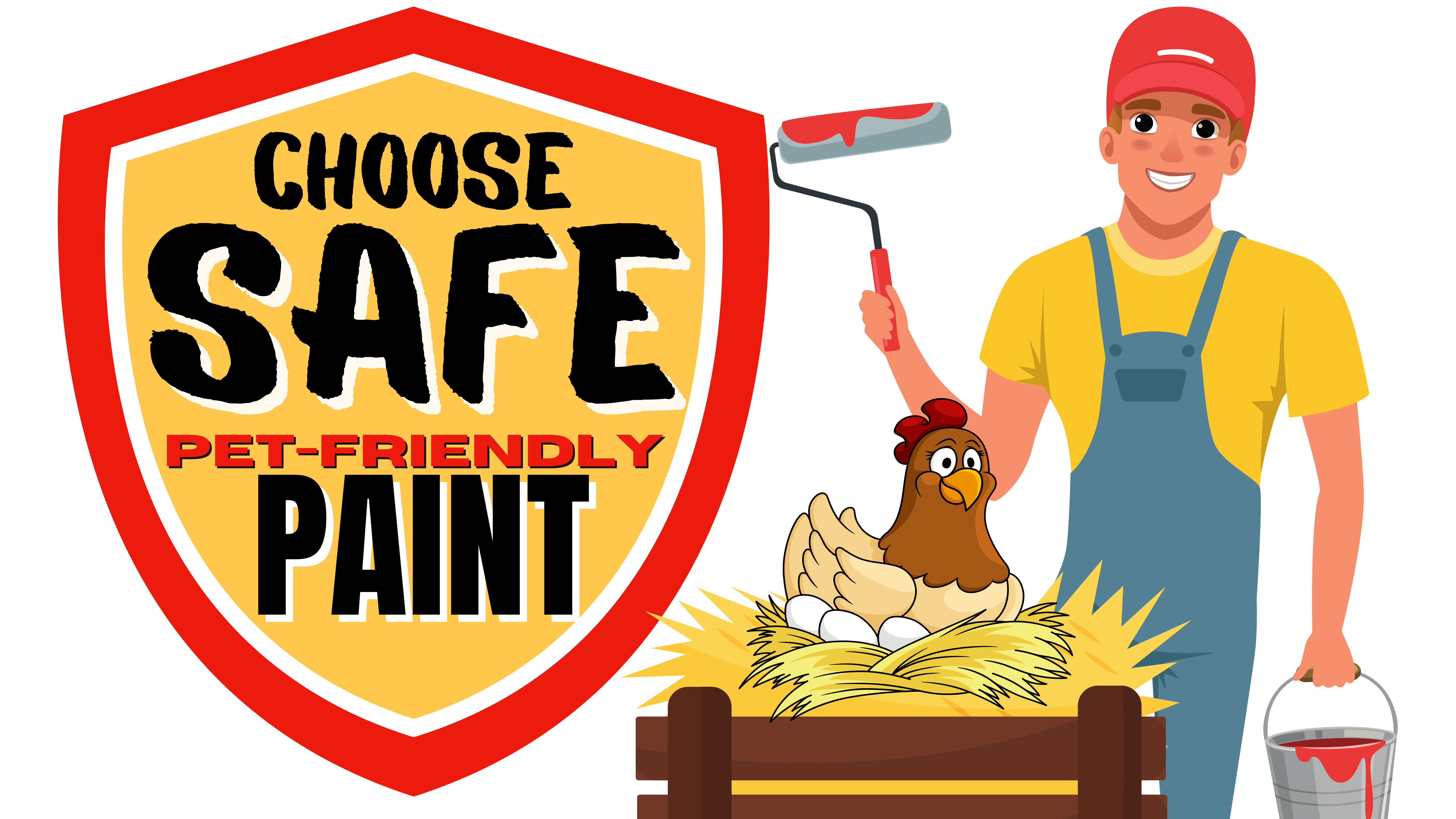
Hazardous Air Pollutants
- Causes headaches, dizziness, and breathing difficulty, eye irritation, nausea
- Increases the risk of cancer, birth defects, and more
“Off-Gassing” and Paint
A paint that contains volatile organic compounds emits gaseous vapors after application. Surprisingly, a fresh coat of paint can off-gas for a long as several years!
So, now what? Are all paints bad for chickens? Surprisingly, no. We have some paints that we can recommend that are a-ok to use on your chicken coop.
Recommended Animal-Friendly Paints
After doing a little research, we found a few paints that are fine to use around animals, including chickens.
ECOS Pet Dwelling Paints
If you are environmentally conscious and want a paint that is safe for animals, this one is outstanding! ECOS hundreds of color options with a choice of eggshell, semi-gloss, high-gloss, and primer finish.
Real Milk Paint Co. Paints
If you are looking for a safe paint that offers a more rustic appeal, these paints are perfect! The Real Milk Paint Co. uses 100% organic ingredients in creating their paint products. The only drawback to using this paint is it comes in powder form, which requires you to mix it. You have 56 color options to choose from.
Color Psychology: The REAL Reason You Choose Certain Colors!
We thought we would throw in some interesting information on why we have favorite colors and what symbolisms there are behind those colors. Maybe this insight will help you to go way outside your typical choices in colors and get creative!
Historical Reliable Red
Have you ever noticed that many chicken coops are painted red? We associate red with the farming lifestyle (which includes raising chickens.) The color red and its association with farming come from red barns that are typical on farms. Do you know that those red barns (color) came to being because farmers (for the past hundreds of years) used to concoct a rusty paint from linseed oil (orange,) milk, lime, and ferrous oxide? This homemade red paint was applied to barns to seal and protect the wood. This mixture also deterred mold and mildew.
Colors: Personality and Symbolism
Color psychology, symbolism, and personality associations greatly influence all aspects of our lives. Many countries choose specific colors for flags based on symbolism. In the marketing and advertising industry, colors represent consumer behavior. Subliminal messages are often conveyed through color. Regardless, you will unconsciously choose a color to paint your coop based on intent and where your psyche is on the color wheel.

Chicken Coop Color Schemes: Colors and Settings/Location
What is the best color to paint a chicken coop? There isn’t any specific “best” color for a coop. It comes down to your personal preference. It doesn’t get any easier than that!
If you have a backyard coop you want to paint and make it stand out, there are a number of colors you can use.
- Reds: eye-catching
- Blues: tranquility and relaxing
- Greens: adds life to an otherwise dead area of your yard
- Yellows: exudes happiness
- Oranges: makes people want to take a closer look
- Purples: grandeur and luxurious
Tips for Choosing Colors
- If you place your coop in a rather dark corner of your yard, or up against a dark fence, you can use lighter colors to liven up that area and to help your coop stand out.
- Create a focal point for your yard by repainting your coop red with white trim. You can also go all out and use various colors to make your coop a whimsical piece of art!
- If you have your coop located near a water feature in your yard, marry the ambiance of the peace from the sounds of the water by painting your coop blues and greens.
- For those who want an uber minimalist or modern look to blend in with a pristine landscape, a more monochrome approach with grays or blacks would be ideal.
Once you’ve picked out a color, you can decide how you want to decorate your coop. We have some suggestions in this article.
The Last “Cluck”
We hope we’ve got your creative juices flowing by helping you get some ideas of not only what safe paint to use, but choosing a color. Now you’ll never choose paint colors all willy nilly because you’ll think back to what we’ve shared with you about color psychology!
- Take your time choosing chicken coop colors because if you don’t, you’ll spend another weekend repainting your coop.
- Choose a VOC-free paint to protect your chickens from toxic fumes.
- Scan the internet to get a little bit of inspiration.
Lastly, did you know chickens see many more colors than humans can? Chickens are tetrachromatic and can see blue, red, green, and UV light.
Happy “chickening!”

